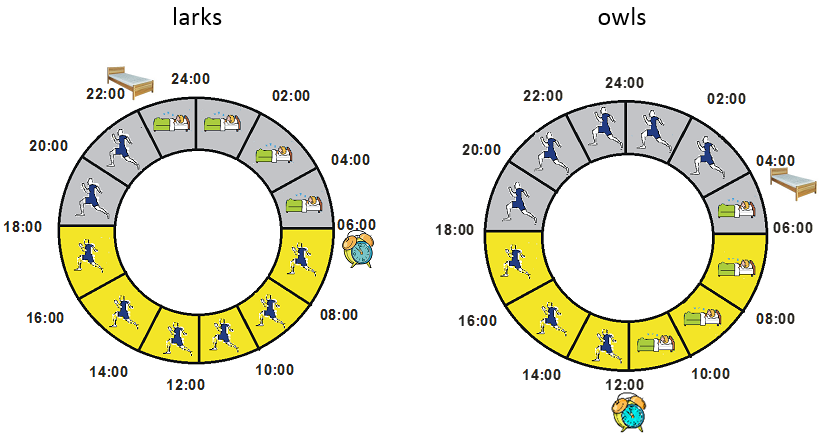Scientists at the Institute of Physiology discovered that the human chronotype sets pace not only for the oscillations of the clock genes present in our brain, but also for similar oscillations in all cells of our body, each of them harbouring so-called peripheral clock. All of these oscillations are thus centrally synchronized.
The chronotype, i.e., individual preference for sleep/wake timing, is governed by the central clock located in the hypothalamus and it is also determined genetically and by environmental factors, mainly by the light. The chronotype affects individual tolerance to shift work. Whereas the late types usually do not mind night shifts, the early types have troubles dealing with them. For the morning shifts, it is the other way round. Therefore, to assign the best working schedule, it is useful to know the individual chronotype. The chronotype is determined according to the timing of sleep and daily secretion of melatonin; both of the markers are controlled by the central clock in the brain.
Scientists from the Institute of Physiology revealed that individual chronotype affects timing of clock gene expression in the peripheral clocks located in the cells acquired by scrubbing the mucosa of the inner cheek. The results demonstrate that the whole timekeeping system, involving the central and also the peripheral clocks, seems to be influenced by the individual chronotype. The study also demonstrate that the analysis of clock gene expression in peripheral cells can be used as a novel phase marker of the timekeeping system. This method can be used also in the real-life conditions.
The study attracted the media attention and besides others, it was cited in the New York Times. Gretchen Reynolds from the New York Times concluded that our preference of sleep/wake timing does not depend only on our lifestyle but it is coded endogenously in our timing system.
Nováková M, Sládek M, Sumová A. (2013): Human chronotype is determined in bodily cells under real-life conditions. Chronobiol Int. 30(4):607-17.

In the early chronotypes (“larks“), the phase of daily melatonin secretion is advanced compared with the late chronotypes (“owls“). (Nováková et al., Chronobiology International, 2013)

Although individuals are exposed to the same lighting conditions, they differ in their preferred sleep/wake schedule. (Nováková et al., Chronobiology International, 2013)
More about the research projects of the department of neurohumoral regulations can be found on its website.